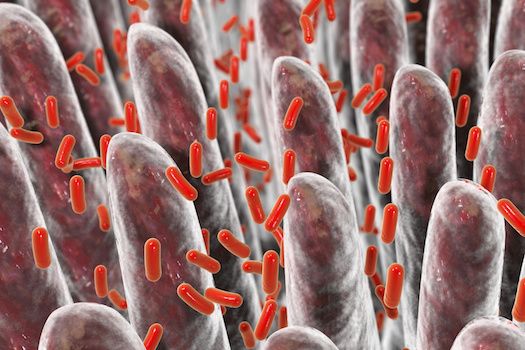Article
Novel Assay Distinguished Bacterial from Viral Infections
Author(s):
A novel assay of host-based biomarkers can help determine whether children have bacterial or viral infections

A novel assay using host-based biomarkers distinguished bacterial from viral infections in a double-blind evaluation of its accuracy in children presenting to emergency departments and admitted to inpatient settings.
"Bacterial and viral infections often present with similar clinical symptoms," Issac Srugo MD, Department of Pediatrics, Bnai-Zion Medical Center, Haifa, Israel, told MD Magazine. "Accurate, rapid and actionable diagnostic tools that can distinguish between the two can help physicians to make better informed antibiotic treatment decisions."
Srugo and colleagues explain that targeting host proteins allows for rapid and quantitative measurements, using well-established technologies. The new host-signature assay (ImmunoXpert, MeMed Diagnostics) identifies 3 host proteins: the viral-induced tumor necrosis factor-related apoptosis-inducing ligand (TRAIL) as well as interferon y-induced protein-10 (IP-10), and the traditional bacterial-induced protein CRP.
The proteins routinely used to support diagnosis of infection, procalcitonin (PCT) and CRP are subject to interpatient variability, according to Srugo and colleagues, and even when considered along with white blood cell count (WBC) and absolute neutrophil count (ANC), often yield equivocal results.
The researchers evaluated the new assay using serum remnants collected at 5 pediatric emergency departments (ED) and 2 inpatient wards from febrile children aged 3 months to 18 years presenting with acute infection from bacterial (68), viral (239) or indeterminate (54) pathogens. The reference diagnoses were confirmed through a consensus of 2 or 3 persons of a 3-person panel after their independent review of the medical records.
"There is no single gold standard for broadly determining the underlying etiology for acute infection," the researchers noted.
The panel of experts utilized predetermined criteria consistent with accepted assessment and diagnostic guidelines, and were blinded to the diagnosis of their peers and to the host-signature assay results.
The levels of TRAIL and IP-10 were found to be significantly higher in children with viral as compared with bacterial infections: mean (SD) levels of TRAIL 139 (122) versus 52 (27) pg/ml; and IP-10 levels of 1011 (626) versus 845 (677) pg/ml.
The CRP were significantly lower in children with viral than with bacterial infection: 31 (32) versus 165 (108) mg/L.
The host-signature assay exhibited the most pronounced difference, with mean viral patient score of 20 (24) vs 85 (23) for patients with bacterial infection. The assay distinguished between bacterial and viral patients with 93.8% sensitivity and 89.8% specificity; with an equivocal outcome in 11.7% of cases. These results were superior to CRP (88.2% sensitivity, 73.2% specificity) and PCT (63.1% sensitivity, 83.2% specificity).
"The robustness of the host-signature is likely explained by the distinctive and complimentary viral- and bacterial-induced expression dynamics of the 3 constituent host proteins," the researchers indicated.
Srugo anticipates that the new assay will be found useful and widely adopted.
"There is no doubt that development of more rapid (within minutes) and easy to use formats of the assay suitable for the ED and the doctor's office would be valuable, and indeed are underway," Srugo said. "Determining the infection etiology during the patient visit can ensure bacterial infected patients receive timely therapy and reduce prescriptions to viral patients for whom antibiotics do nothing to speed recovery, while causing harm to the larger community."
The study, "Validation of a Novel Assay to Distinguish Bacterial and Viral Infections," was published online in the journal Pediatrics last month.
Related Coverage
NIAID Assures Standards Maintained in Rush to Develop Ebola Vaccine
Dr. Aaron Brault, PhD: Sexual Transmission of Zika Through Animal Models
Many Patients Unaware of Risks of Double Dosing OTC Cold/Flu Medications
2 Commerce Drive
Cranbury, NJ 08512
All rights reserved.





